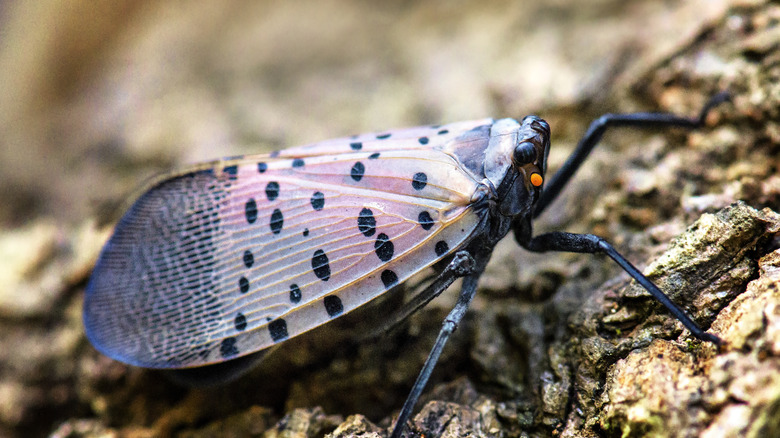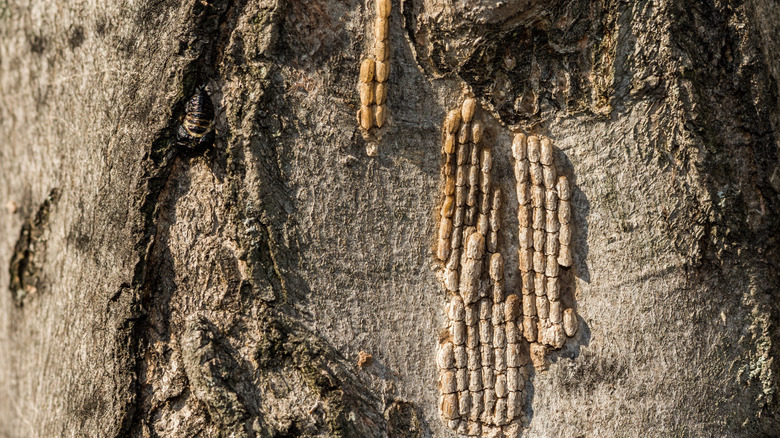What To Know About Invasive Spotted Lantern Flies To Keep Them Out Of Your Yard
If you are an enthusiastic gardener or nature lover, you have likely been concerned about reports of the spotted lanternfly's (Lycorma delicatula) spread across North America. Native to Asia, these bugs were first seen in the United States in 2014. They are now found in 18 states. Due to the number of plants, including food crops like grapes, that the pests can damage, it is important to control them and prevent the spread. Removing tree of heaven (Ailanthus altissima) plants, destroying spotted lanternfly eggs and adults, and making sure you are not accidentally transporting the pests, can all help to slow the spread and keep the bug out of your yard. Accidentally transporting them in your gear or in your car could allow them to spread to new areas. Before traveling, check your vehicle for the bugs or their egg masses. You should also check any plants, produce, or equipment you are moving.
One of the spotted lanternflies' preferred host plants is the tree of heaven, which is also invasive in North America. Refraining from planting a tree of heaven and removing any that are already growing near your home may decrease the chance of spotted lanternflies in your yard. Because the trees can grow back from being cut, you would need to use systemic herbicide. Be sure to wear personal protective equipment and follow all directions on the label when doing so.
Dealing with spotted lanternfly adults and eggs
If you know that spotted lanternflies have made it to your area, look out for egg masses on your trees. These mud-like lumps are found on tree bark and other outdoor surfaces. By scraping the masses into bags of rubbing alcohol, you can prevent them from hatching and help decrease the population of spotted lanternflies. Learning to identify the bug is beneficial. Adult lanternflies are about an inch long. When their wings are closed, you may notice bold black spots on their cream wings. They also have a reddish color on their wings, which are visible when they are flying, or when their wings are open.
One option for dealing with them is to use sticky traps on trees to capture the pests. Just make sure to put up a wire or mesh barrier to prevent injuries to birds and other wildlife. You can also DIY a spotted lanternfly trap. These traps are made of mesh bags and the upper part of two milk jugs. Glue the milk jugs together to create an hourglass shape and then secure the mesh bag onto the lower jug. Attach the trap to a tree. Lanternflies, especially nymphs, should fall in and have no ability to escape. Additionally, you may want to think twice before trying to get rid of spiders in your garden, as the arachnids could be a helpful ally against spotted lanternflies, though more research on the topic is needed.

